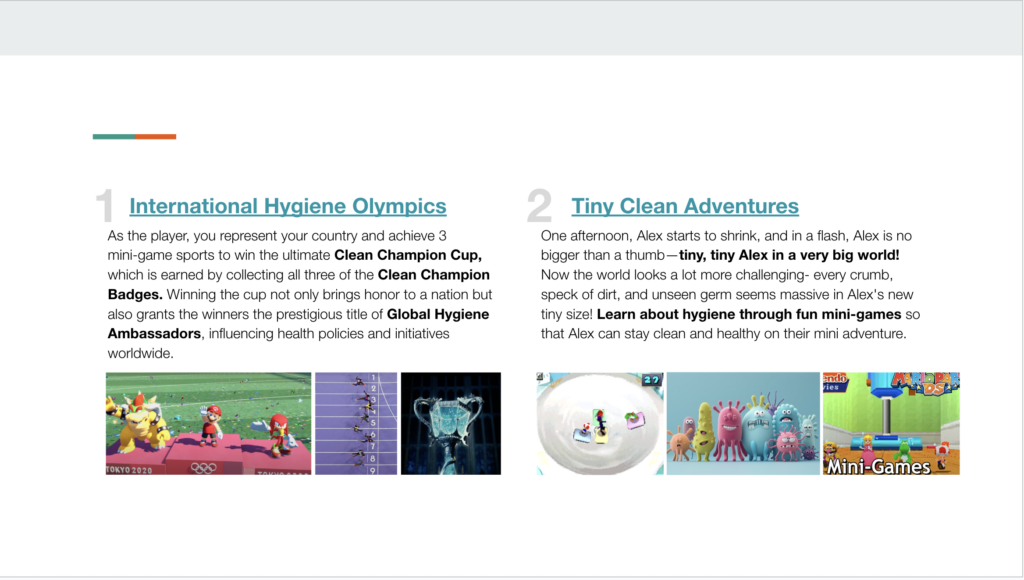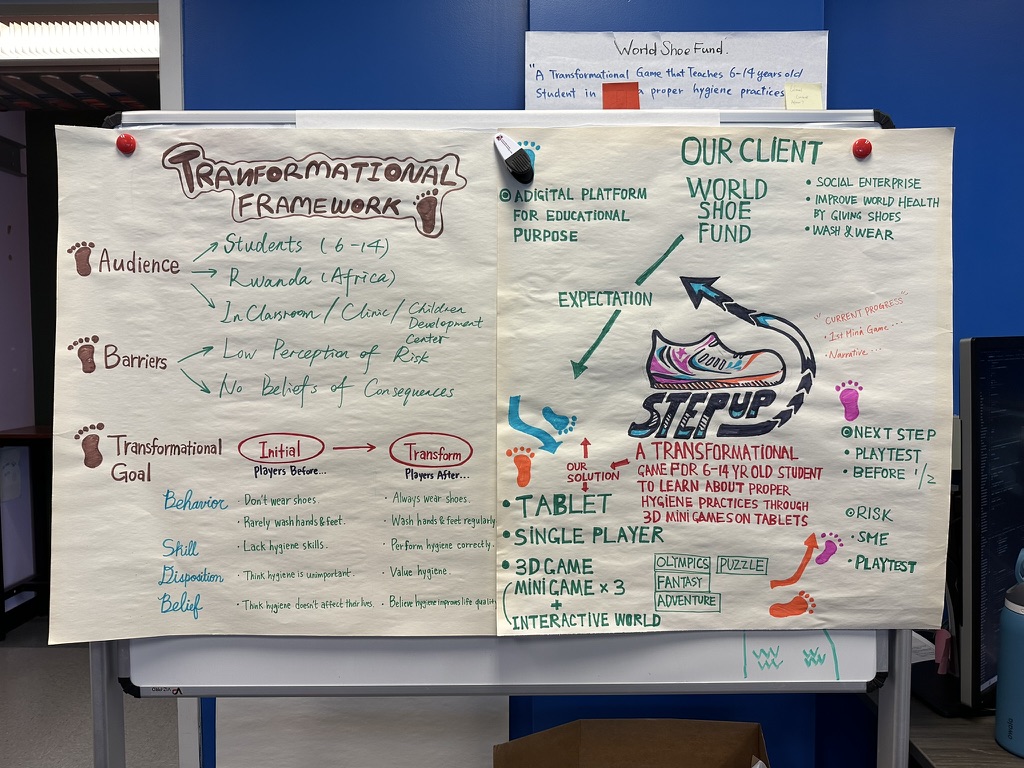It’s officially week 3, which means it’s time for quarters. Quarters is the time where the team would share their early project ideas with the faculties. Teams will present what their progress is so far, give idea proposals, and then receive feedback. It is a good chance to see if we are on the right track and to make adjustment before any major development start. Every group of faculties have 15 mins to chat with us, and the next group come and chat with us. The team had their quarters scheduled on Friday, which gave us time to do more work and preparations.
Work before 1/4s
By the end of last week, the team had a brief meeting about the narratives. Anna and Yawen had been thinking hard to come up with some great storylines for the game. During the advisor and the client meeting, we shared the narrative ideas with them and got great feedback to move forward.


Among the four ideas, after getting feedback and discussion, the team is now leaning toward the narrative that combines the idea of sports competition and fantasy adventure! Here’s a brief summary about the narrative:
There is a global competition where teams from various countries compete for the title of Clean Champion in a prestigious event held every four years. Participants, known as Clean Heroes, are experts in health sciences, environmental engineering, and sanitation technology. The competition tests their ability to solve real-world hygiene challenges in different climates and regions, such as combating viral outbreaks. The ultimate goal is to win the Clean Champion Cup, a symbol of innovation and global health, granting winners the prestigious title of Global Hygiene Ambassadors.
Game Concept
Did we mentioned the game concept yet?
In our upcoming 3D game, players will experience a brief but engaging 10-minute journey through a small game world. Players will control the main character as they explore the environment and interact with various characters, leading to three mini-games. The shoe companion will play a vital role, offering support with different abilities in each mini-game. Each mini-game features its own scene which all lead players to their learning goal. With indirect controls guiding the player, the exploration will be concise, keeping the focus on completing the challenges and progressing through the levels.
Mini Game 1
With a clearer narrative, the team immediately started the heated discussion of our first mini game. We thought of the first game as an introductory level that brings the players into the game world with a more basic lesson, rather than scaring them with difficult problems. We incorporated the UNICEF’s standard 5 handwashing step into the game. The player would have to recognize the correct order of handwashing so as to perform an amazing high jump to go through the obstacle and exit the level.
Regina has been drawing some concept art about the environment, which brings out a friendly and cartoonish vibe that would indeed appeal our players.
Lawrence also made some models for the game. We think of having a badge collecting book as an intro and now we have the first model.
Tyler has also been working on the gameplay. He successfully created a prototype that really visualize our imagination about the game.
Interviews
Besides from some early production, the research is still going on as well. The team had two interview this week. First, Eva and our instructors met with Tino Kreutzer, who is the COO of KoboToolbox, a a free and open source platform for the collection, management, and visualization of data. He had worked with several NGOs around the world, and he gave us some resources about who to reach out and do research in which aspect in order to get more accurate in designing. Anna also scheduled an interview with Peace, who is her friend from undergrad and also an Rwandan! Peace has now been living in Rwanda and he also has been working closely with some government departments in Rwanda. He …
Quarters!
For quarters, we planned to talk about our project’s current step and the transformational framework, and we also wanted to addressed some of the risks and our next step.
After the last week’s workshop, the team looked up more research and got useful information from our client, which allows us to identify the framework. Our Audience and Context would be students age 6 to 14, targeting in Rwanda for the first implementation, and the environment will be in a classroom, clinic, or a children development center. Initially, we found it hard to find the barrier to tackle. Our client, Cameron, shared with us some research that had been done about the barriers of handwashing and shoe-wearing. With the information we got, we recognized that the main reasons that students don’t perform these behaviors are that they have low perception of risks and no beliefs of consequences. Based on the facts, we planned to transform players behavior (from not wear shoes, wash hands and feet to do so), disposition, and beliefs (believe that the practices are valuable and improve their life quality.)

To prepare for quarters, the team spent an afternoon making the posters.
After quarters
The overall feedback are pretty positive. Some of the faculties suggested us to look into more existing games in relevant topics, and some recommended us to think more deeply about the reasons behind the current situations and try to break down the transformation goals into smaller steps.
The next step for the team is to get in touch with local Rwandan as soon as possible, this could give us insights to design the game that could effectively tackle the problem. The team would also continue to build the game and figure out the best game for the transformation goals.
